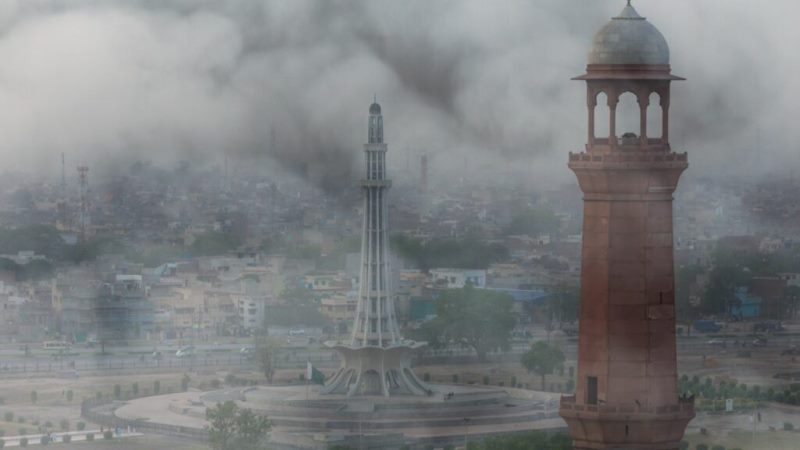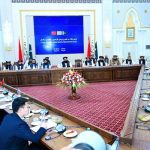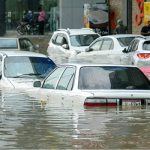Lahore Air Pollution Crisis Intensifies as City Tops Global Charts
The Lahore air pollution crisis reached a critical peak on Saturday morning, as the metropolis earned the undesirable distinction of being the world’s most polluted city. A thick, toxic blanket of smog enveloped the city and its surrounding areas, creating hazardous conditions for its inhabitants.
Hazardous Air Quality Readings Trigger Health Alerts
According to real-time data from the air quality monitoring platform IQAir, the severity of the situation was starkly evident. At 8:30 AM, Lahore recorded a U.S. Air Quality Index (AQI) reading of 412, a level categorized as “hazardous.” More disturbingly, the concentration of fine particulate matter, known as PM2.5, was measured at 281 micrograms per cubic meter (µg/m³). This staggering figure is 56.2 times higher than the World Health Organisation’s (WHO) recommended annual air quality guideline. This persistent toxic haze has shrouded the city for several consecutive days, significantly reducing visibility and leading to a surge in public health complaints. Residents have reported widespread symptoms including throat irritation, breathing difficulties, and itchy eyes. In response, public health authorities have strongly advised people to minimize outdoor activities and use protective masks when going outside is necessary.
Seasonal and Regional Factors Worsen Pollution Across South Asia
This severe deterioration in air quality coincides with the beginning of the winter season. The phenomenon is driven by a combination of cooler temperatures and stagnant winds, which create a meteorological lid over the Punjab region. This layer traps pollutants emitted from vehicles, industrial factories, and the seasonal burning of crop residue, preventing them from dispersing. The crisis is not confined to Lahore alone. Across the border, New Delhi also grappled with alarming pollution levels, ranking among the world’s most polluted cities with an AQI of 275, deemed “very unhealthy.” The Indian capital’s PM2.5 concentration was recorded at 200 µg/m³, largely attributed to vehicular emissions, industrial output, and post-harvest stubble burning in neighboring states. Meanwhile, in Pakistan, the coastal city of Karachi reported a U.S. AQI of 141, classified as unhealthy for sensitive groups. Its PM2.5 level reached 51.7 µg/m³, which is still 10.3 times higher than the WHO’s safety threshold.
Government Measures and the Challenge of Long-Term Solutions
In response to the escalating Lahore air pollution crisis, local authorities have initiated several countermeasures. These include water sprinkling on roads to settle dust and partial shutdowns of industrial operations. However, environmental experts consistently warn that these actions are short-term fixes and insufficient to address the root causes of the problem. Without consistent enforcement of environmental regulations and robust regional coordination to tackle cross-border pollution sources, the air quality situation is expected to deteriorate further as winter temperatures continue to drop. Health professionals have issued grave warnings, noting that prolonged exposure to such dangerously high levels of pollution can lead to severe long-term health issues, including an increased risk of stroke, heart disease, lung cancer, and chronic respiratory diseases—a growing concern for millions of people across South Asia.
Technological Deployments and Official Statements on Anti-Smog Efforts
On the technological front, Punjab’s first advanced Smog Monitoring and Control Centre is now operational and continuously collecting air quality data. In a bid to reduce particulate matter at its source, anti-smog guns are being deployed at identified smog hotspots across Lahore. According to Punjab Senior Minister Marriyum Aurangzeb, nine provincial government departments are executing large-scale anti-smog operations under the direct direction of the Chief Minister. The minister stated that the environmental protection force and department are fully mobilized, with all sectoral squads active in the field. She highlighted innovative monitoring techniques, revealing that brick-kilns are now being surveilled using drone technology, which provides live reporting. Aurangzeb also confirmed that anti-smog guns and air quality monitors are actively deployed. Furthermore, she noted a significant advancement in the government’s approach: for the first time in Punjab’s history, the ability to forecast the air quality index has enabled more timely and targeted operations to control pollution levels.














